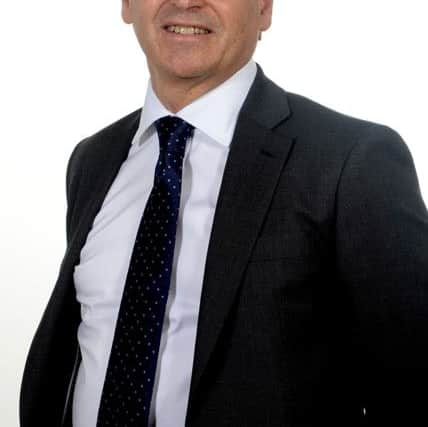King’s Mill bosses discuss high death rates


Board members of Sherwood Forest Hospitals NHS Foundation Trust (SFHFT) discussed their continuous high death rate at a public meeting on Thursday (July 30).
Newly released Hospital Standardised Mortality Ratio (HSMR) figures show that there were a significantly higher number of patient deaths than they were expecting.
Advertisement
Hide AdAdvertisement
Hide AdThe statistics, provided by Dr Foster, show that there were 156 patient deaths out of an expected 130 in March alone - the latest figures that are available.


Two years ago, Chad revealed the mortality crisis after a meeting which suggested that the deaths were down to blood poisoning.
And a full case review was carried out after 100 consecutive deaths from sepsis to try and improve the rates.
But at last weeks meeting, the figures revealed some of the top causes of these deaths are pneumonia, septicaemia and secondary cancer caused by cancer treatment.
Advertisement
Hide AdAdvertisement
Hide AdBoard members were quick to defend the figures, which had been on the decline until March, by saying that they are not fully validated yet and could still change.
Dr Andrew Haynes, executive medical director, said that the safety of the patients is of “paramount importance” to the Trust.
He said: “Reducing the mortality ratio is a key priority for us and it means looking constantly at our patient care both within and beyond our hospitals. This is to ensure our patients have the most appropriate and safe care possible.”
“We are aware that our mortality figures have been raised and a significant amount of effort has gone into understanding why.”
Advertisement
Hide AdAdvertisement
Hide AdThe meeting went on to discuss that they need a more “robust action plan” to try and tackle this issue.
And Dr Haynes added that there are plans in place for the trust to work with the Clinical Commissioning Group (CCG) in reducing the deaths.
He added: “We concluded that there are some clinical issues that we are addressing via a mortality action plan. This plan has been agreed and signed off with our commissioners in June and focuses on the things we need to do to achieve an improved HSMR. This includes targeting sepsis, and pathways for pneumonia, GI bleeding and acute kidney injury.
“There is a trust mortality group that includes members from all divisions of the hospital, as well as partners in the community to review our HSMR data. There is a community wide mortality group chaired by the CCG, of which we are members, which reviews relevant issues within and outside of the trust.”
Advertisement
Hide AdAdvertisement
Hide AdDr Haynes added: “Our aim is to provide the best care possible for all of our patients and part of this is to ensure we get our mortality ratio within normal range. We are working closing with colleagues inside and outside of our hospitals to achieve this improvement.
“All of the mortality data reported by the Trust is supplied and verified by Dr Foster.”